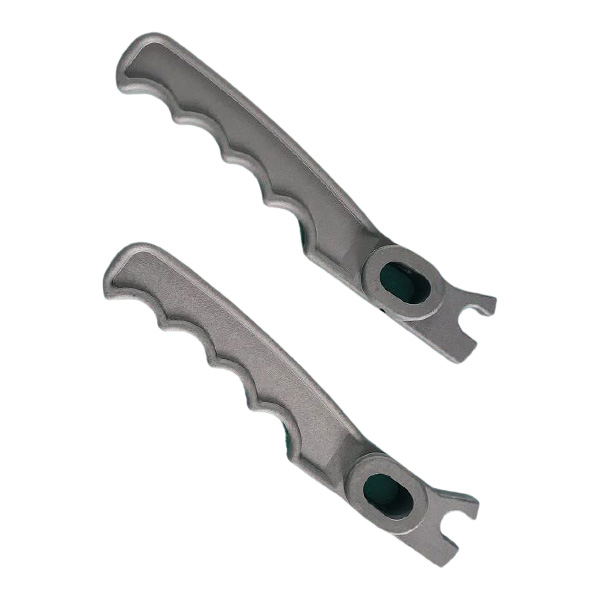All About Sand Casting: Everything You Need to Know
2025-01-14
Sand casting is one of the oldest and most versatile metal casting methods still in use today. It has a significant role in producing a wide range of metal products, from automotive parts to intricate sculptures. Whether you're a manufacturer or just curious about the process, this blog will provide you with all the essential information about sand casting.
What is Sand Casting?
What exactly is sand casting?
Sand casting is a metal casting process that involves pouring molten metal into a mold made of sand. The mold is created by compacting sand around a pattern, which forms the shape of the final product. Once the metal has cooled and solidified, the mold is broken away to reveal the cast part.
How Does Sand Casting Work?
What are the key steps involved in sand casting?
The sand casting process generally follows these steps:
1. Pattern Creation: A pattern of the desired object is made, typically from wood, metal, or plastic. The pattern is a replica of the final casting.
2. Mold Making: The pattern is placed in a container, and sand mixed with a bonding agent (like clay or resin) is packed around it to form the mold.
3. Core Setting: If the cast requires internal cavities, a core made of sand is inserted into the mold.
4. Melted Metal Pouring: Molten metal is poured into the mold through a gating system.
5. Cooling: The metal cools and solidifies in the mold.
6. Shakeout: Once the metal has solidified, the sand mold is broken away, and the casting is removed.
7. Finishing: The casting is cleaned and any excess material or imperfections are removed.
What Materials Are Used in Sand Casting?
What types of sand are used in sand casting?
The sand used in sand casting is typically a mixture of silica (silicon dioxide) and a bonding agent like clay. The two main types of sand used are:
1. Green Sand: A mixture of sand, clay, water, and sometimes other additives. It is used to make molds in a "green" or wet state.
2. Resin Sand: This type of sand is mixed with resin to improve its binding properties and is used for more precise casting, particularly in industries where higher accuracy is required.
What Are the Advantages of Sand Casting?
Why is sand casting such a popular method?
Sand casting offers several advantages:
1. Cost-Effective: Sand casting is relatively inexpensive compared to other metal casting methods, especially for small to medium production runs.
2. Versatile: It can cast a wide variety of metals, including iron, steel, aluminum, and copper alloys.
3. Large Size Capabilities: Sand casting can produce both small and large parts, even up to several tons in weight.
4. Complex Shapes: The process is capable of casting complex shapes and intricate designs.
5. Low Tooling Costs: Since the molds are made from sand, the tooling costs are significantly lower than in other casting methods like die casting.
What Are the Limitations of Sand Casting?
Are there any drawbacks to sand casting?
While sand casting has many advantages, it also has some limitations:
1. Surface Finish: The surface finish of sand castings can be rough, requiring additional machining to meet tighter tolerances or smoother finishes.
2. Accuracy: Sand casting is less precise compared to other casting methods, like die casting, especially for small or thin-walled parts.
3. Labor-Intensive: It can require more manual labor, particularly in the pattern-making and mold preparation stages.
What Types of Products are Made Using Sand Casting?
What kinds of products can be produced through sand casting?
Sand casting is used to produce a wide variety of products, including:
- Automotive Parts: Engine blocks, crankshafts, brake components, and other critical parts.
- Industrial Machinery: Gearboxes, pump housings, and machine parts.
- Aerospace Components: Some aerospace components, especially large ones like turbine casings, can be made using sand casting.
- Art and Sculpture: Artists use sand casting to create bronze sculptures and other artistic metal pieces.
- Marine Parts: Components like propellers and anchors for ships are commonly cast using sand casting.
What Metals Are Suitable for Sand Casting?
Which metals are best for sand casting?
Many metals can be cast using sand casting, including:
- Aluminum: Lightweight and highly versatile, aluminum is commonly cast in sand molds.
- Iron: Both gray and ductile iron can be cast using sand molds, especially for automotive and industrial applications.
- Steel: Steel can be cast, but it requires higher temperatures and more specialized sand molds.
- Copper Alloys: Bronze and brass can be cast using sand casting for decorative and functional parts.
- Zinc and Magnesium: These metals are also suitable for sand casting, though they are used less frequently.
Is Sand Casting Environmentally Friendly?
Is sand casting an eco-friendly process?
Sand casting is generally considered environmentally friendly, particularly because the sand molds can often be reused. However, the bonding agents used in the process can produce pollutants if not properly managed. Efforts to improve sustainability in sand casting are ongoing, with new sand recycling techniques and cleaner binders being developed to reduce environmental impact.
Conclusion
Sand casting remains one of the most widely used methods for metal casting due to its versatility, cost-effectiveness, and ability to create both large and complex components. Though there are limitations in terms of surface finish and accuracy, its benefits often outweigh the drawbacks, especially for larger parts or low-to-medium production runs. If you're looking to create metal parts for automotive, industrial, or artistic applications, sand casting may just be the ideal method to consider.



